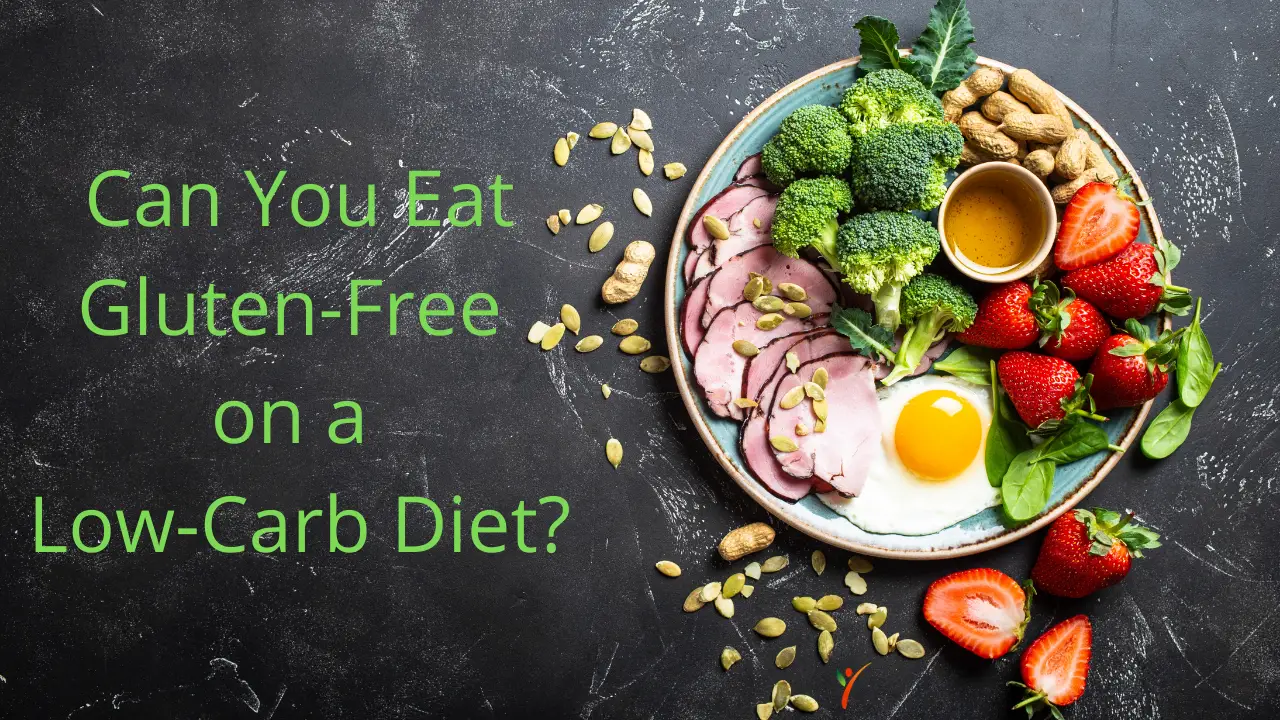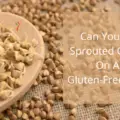When you're following a specific diet plan, especially one that requires constantly looking at food labels, it may be difficult to add another. Many gluten-free dieters shy away from getting into a second diet program due to the existing restrictions of a gluten-free life.
So, the question arises, is it even possible to add a low-carb diet for a gluten-free dieter? Keep reading to find out!
Defining a Low-Carb Diet
The main food types required for a body's structure and functioning are proteins, fats, and carbohydrates. Each has its unique significance and is different from the others.
For instance, proteins are integral for the proper development of various body structures, while fats are a significant energy source for later use. The primary energy supply comes from carbohydrates. If the carb intake exceeds the usage, the body sends it to the storage pool to utilize it later on, and these excess carbs convert into fat if not called upon for energy within a specific period.
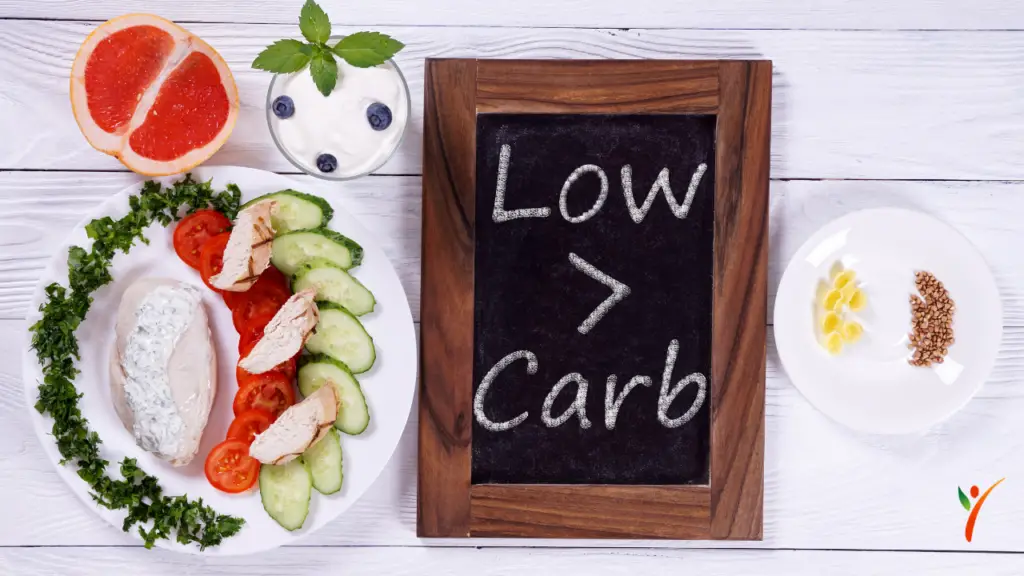
If your dietary intake of carbs is low enough, your body starts using fats and proteins as the predominant energy source; in other words, the basis of a “low carb diet.” The minimum amount of carbohydrate intake differs in the varying dietary plans, but the general daily allowance is about 20-50 grams.
Benefits of Going Low-Carb
Low-carb diets and their health effects have been a controversial topic over the past few years. Some nutritionists have previously asserted their reasons to support their hypothesis that a low-carb diet is risky for health and can cause heart problems by raising cholesterol levels. But after detailed and thorough scientific researches, experts and dietitians have agreed that a low-carb diet is good for your health.
Reduced hunger and appetite:
Hunger paves the way for increased appetite. The constant need for eating is why people trying to reduce weight eventually feel so low-spirited that they give up. Fortunately, following a low-carb diet will make you feel satiated, and you won't feel the desire or need to eat more and fulfill your food craving while also helping with your mood.
Rapid weight loss:
A low-carb diet plan is what you've been looking for all this time if you instantaneously want to reduce weight. A low-carb diet initially reduces the insulin and water levels in your body, proving to be more effective rather than conventional weight loss methods. However, this marked difference is only for up to six months, after which this difference becomes insignificant.

Fat loss:
There are two types of fats in the human body based on their occurrence site. The fat present under the skin is subcutaneous fat, while the fat present in the abdominal cavity is visceral fat as it is present around your abdominal organs.
The latter is more dangerous as it contributes to a higher risk of heart issues, type 2 diabetes, insulin resistance, and inflammation. If you're low on carbs, your metabolic system digests the visceral fat first, assuring better health conditions.
Moreover, there are certain bad fats called triglycerides which also cause serious heart problems and diseases. Carbohydrate consumption in sedentary people and a low-fat diet cause elevation in blood levels of triglycerides.
Thus, a low-carb diet consisting of moderate to high-fat content can decrease these harmful fats. Consequently, this method proves to be beneficial when it comes to protecting the heart from numerous problems.

Treatment of epilepsy:
A low-carb and ketogenic diet can serve a therapeutic purpose for brain health. Studies have proven that for more than 50% of children, the frequency of seizures is reduced to half the amount.
Meanwhile, 16% of the children had no seizures at all after eating this type of diet. Researchers are conducting further studies to check the diet's effects on the treatment of other mental illnesses.
The mechanism behind this is that during low-carb intake, the brain starts to metabolize and break down ketones, a chemical compound. These ketones, when accumulated, can pose a threat and prove detrimental for patients with epilepsy.
Types of Low Carb Diets
There are various low-carb diet plans, but not every diet program will suit your health goals, food preferences, or lifestyle, so pick the one you can stick to and achieves your requirements.
Standard Low-Carb Diet:
This is a generalized way to do a low-carb diet and does not have an actual fixed definition other than that the name suggests. You're supposed to eat high protein dishes and healthy fats such as meats, nuts, fruits, and vegetables by avoiding foods such as sugary soft drinks, potatoes, or grains.
The daily dietary allowance can range depending on personal preferences and goals. For instance, there is a range of 100-150 grams per day if you want to maintain weight or exercise frequently, while for weight loss, the best suitable span is 50-100 grams per day. For rapid weight loss, you need to keep the intake level below 50 grams.

Ketogenic Diet:
This diet is high-fat and very low-carb. The idea is to keep the intake of carbohydrates so low that the body burns and uses only fats for energy. This metabolic condition is called ketosis.
The brain produces the minute quantities of necessary carbohydrates. But, for every other metabolic process requiring energy, fats are consumed. Thus it's essential to either avoid carbohydrates or allow only small quantities if unavoidable.
The Standard Ketogenic Diet is the conventional diet plan, but nutritionists sometimes recommend other variants such as Targeted Ketogenic Diet and Cyclical Ketogenic Diet.
Low-Carb Paleo Diet:
This diet plan promotes a trend of food consumption and eating habits similar to that followed in ancient times before the agricultural or industrial revolutions, called the Paleolithic era.
Consumers of the low-carb paleo diet have shown lesser risks for heart problems, reduced blood sugar levels, and weight loss. It is not a low-carb diet by definition, but it falls in this category in practice.
The paleo diet eliminates all kinds of processed foods, added sugars, dairy products, legumes, and grains and emphasizes the consumption of meats, fruits, vegetables, nuts, tubers, and seeds. Other versions of the paleo diet include the perfect health diet and the primal blueprint diet.

The Atkins Diet:
This low-carb diet is quite well-known and has remarkable effects. Substitute all the high-carb stuff with high-protein and high-fat stuff, and you have your Atkins diet in a nutshell.
It comprises 4 phases. You start in the first phase, called the induction phase; you're supposed to eat, for two weeks, less than 20 grams of carbs daily. In the balancing phase, slowly introduce low-carb vegetables, fruits, and nuts.
Next is the third phase, when you're closer to your goal, further increase your carb intake to make the weight loss process a bit slower so that it can be narrowly controlled, which is why this phase is also called fine-tuning.
In the last or maintenance phase, try out different healthy carbohydrates. Keep a check on what your body can tolerate ensuring that you don't gain all the weight you lost. Research indicates that this diet plan is safe and effective as long as you meet the daily fiber requirements.
Eco-Atkins Diet:
It is better to call it a relatively low-carb version of a vegan diet instead of calling it a vegan version of the Atkins diet because it does not meet the definition of a “low-carb diet” strictly. About 25 percent of the calorie intake is from carbohydrates, 30 percent from proteins, and 45 percent from fats.
Low-carb, High-Fat (LCHF) Diet:
As the name indicates, this diet consists of a low-carb intake and a consequential high-fat intake, but it also emphasizes unprocessed foods. It majorly comprises eggs, meat, fish, dairy products, vegetables, and healthy fats.

Zero-Carb Diet:
Eliminating all the carbs from your diet is the primary aim of a zero-carb diet. People who follow this diet eat animal food regularly, including eggs, fish, meat, and animal fats. This diet lacks vitamin C and some essential fibers, making it impractical and not generally suggested by nutritionists.
Low-Carb Mediterranean Diet:
This diet is popular amongst dietitians and nutritionists and has a historic touch since its basis is the traditional foods served and consumed in the 20th century in the Mediterranean countries. It restricts high-carb foods such as grains and promotes eating fatty fish and extra virgin oil instead of red meat and butter.
Are Low-Carb and Gluten-Free Similar?
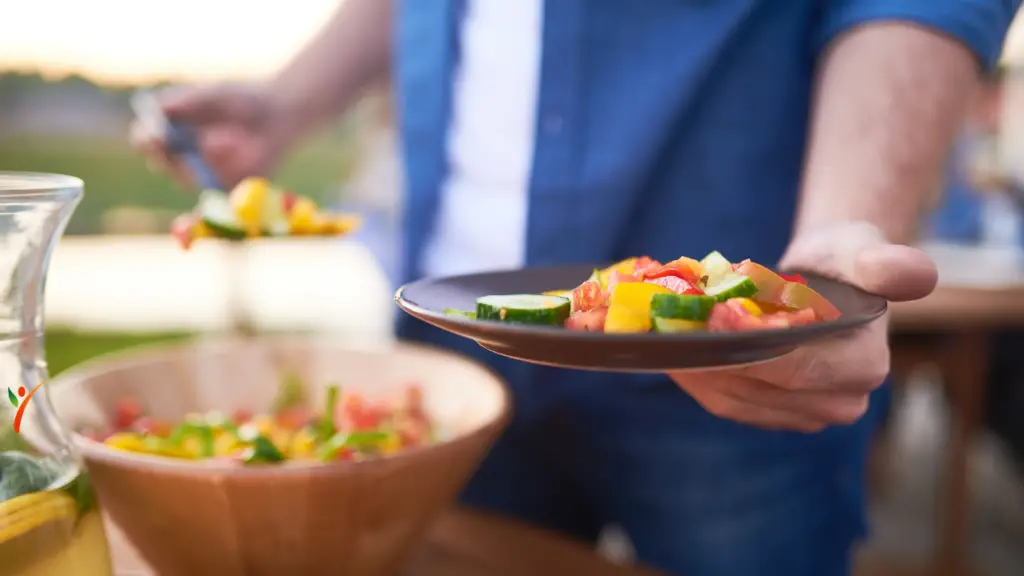
Going gluten-free does not specifically mean that your diet is low-carb, neither does following a low-carb diet mean your dietary intake is gluten deficient. Gluten is most commonly found in barley, wheat, and rice. Together these constitute the ingredients of many food items and dishes such as bread, pasta, cereal, beers, and various other baked items.
Gluten is a group of proteins that maintains the shape and structural integrity of these items. These food items are a source of carbohydrates, and thus eliminating these and going gluten-free could and should've meant your diet is low-carb too.
However, certain high-carb foods do not contain gluten, and you won't be eliminating them while taking a gluten-free diet. There are food items that fall under the ‘low-carb foods' category, but they remain a gluten-based source and can become dangerous for celiac and non-celiac sensitive individuals.
Thus, it is appropriate, and quite important, to consider both of these as characteristically different diets with some similarities. Assuming gluten-free and low-carb diets as similar can be dangerous and detrimental for a celiac or gluten-sensitive individual's health while making a mess of the weight loss plan of a person following a low-carb diet.
Low-Carb Foods That Aren't Gluten-Free
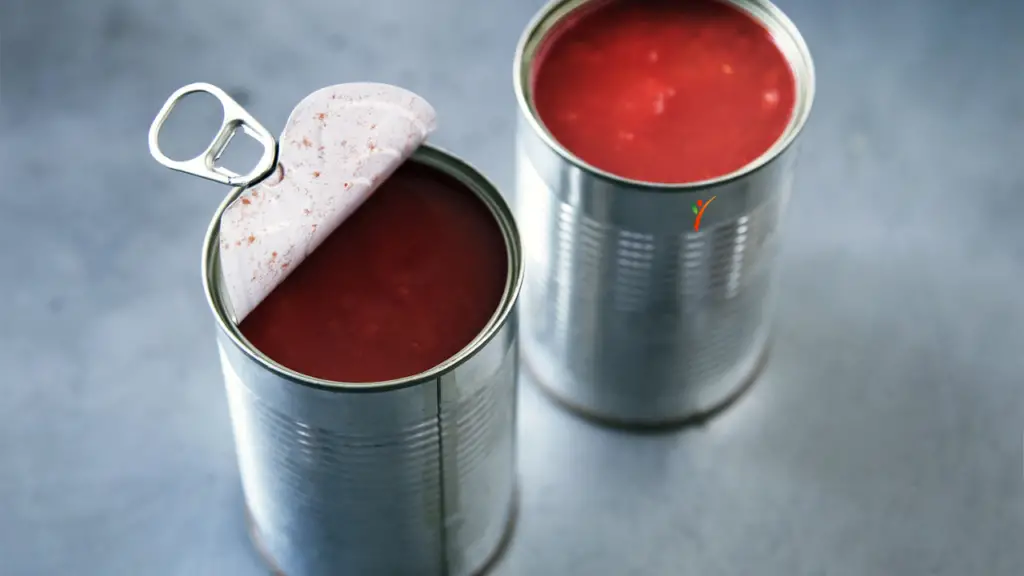
The following is a comprehensive list of items that have a low-carbohydrate content but contain gluten:
Sausages:
Although manufacturers have introduced many gluten-free varieties, many regular sausages contain rusk obtained from wheat.
Soups:
Various canned soups contain gluten in such high amounts that gluten-free dieters should avoid them at all costs. Cream-based soups consist of wheat flour in unimaginably high quantities. Wheat is one of the predominant sources of gluten.
Broth:
Whether it is a chicken broth, a beef broth, or a commercially prepared stock, it will contain gluten. Dietitians have considered broth to be a hidden source of gluten. The unsafe ingredient, also shown on the ingredients label, is wheat. Various chicken bouillons can also contain gluten.
Therefore, you must always read the ingredient labels to ensure the products you purchase are gluten-free.
Gluten-Free Foods That Aren't Low-Carb
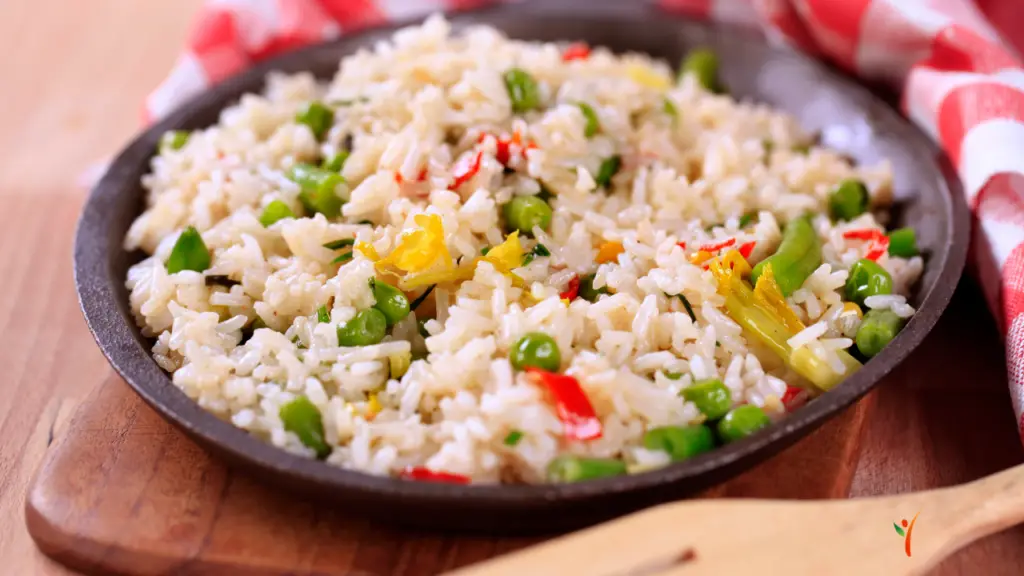
A wide variety of naturally gluten-free food items contain high quantities of carbohydrates. Some of these are:
Rice:
All sorts of rice, long or short, white or brown, fragrant or non-fragrant, are gluten-free and an excellent carbohydrates source, almost making up 80 percent of the dry weight. The predominant carbohydrate present in rice is starch.
Corn:
Corn, in its natural and pure form, is gluten-free and can be included in a gluten-free diet without any hesitation, but it is not a good candidate for inclusion in a low-carb diet.
Nearly a quarter of the dry weight of corn is composed of carbohydrates, or of starch majorly and sugars in small amounts. This trend reverses in sweet corn that contains a high amount of sugar and minute quantities of starch.
Potato:
Potato is a must-avoid if you're to follow a low-carb diet because a medium-sized potato contains about 37 grams of carbohydrates, although it is an excellent choice for a gluten-free diet.
Other sources:
Some naturally gluten-free but high-carb sources are cassava, soy, millet, chia, sorghum, beans, yucca, quinoa, flax, and buckwheat groats which also go by the name of kasha, amaranth, and arrowroot.
Low-Carb And Gluten-Free Foods

Maintaining a gluten-free and low-carb diet parallel is not a quest of mission impossible that can never happen. Before you start putting yourself in a dietary dilemma and thinking delicious meals are off the table, it is possible to follow the diets, eat nutritious foods, and have tons of recipes that appeal to your tastebuds.
You're already cutting out the major high-carb foods in a gluten-free diet; a little planning is all it'll take for the successful implementation of both diets in your lifestyle. The following foods are low-carb and gluten-free:
Flours:
Non-grain flours are gluten-free and low-carb. You can opt for healthy whole-grain flours that are low-carb such as gluten-free oat flour and quinoa flour. However, a better option is to go for nutritious non-grain flours, including coconut flour and almond flour, to make delicious low-carb and gluten-free bread.
Fruits:
Fruits are naturally gluten-free, which is why you should be incorporating as much of them as you can in a gluten-free low-carb diet. Some fruits are high in carbs, while others are ideal for a low-carb diet. Eat low-carb fruits such as berries, watermelon, peaches, and avocados.
Vegetables:
Another gluten-free food category is veggies because they come with loads of nutrition. It is known that greens are your best friends when it comes to a low-carb diet, lettuce, spinach, broccoli, green beans, kale; add them all to your diet plan. More delicious non-starchy vegetables are bell pepper, eggplant, onion, radishes, cauliflower, and Brussel sprouts.
Meat, Poultry, and Seafood:
Meat and seafood provide the fats and proteins for a low-carb diet. Nutritionists recommend making meat, poultry, and seafood a significant portion of your daily diet. You'll be following the diet and reaping the numerous benefits of these foods.
Low-Carb, Gluten-Free Recipe
Apple Muffins with Cinnamon Pecan Streusel

Although both diets exhibit various dissimilarities, certain food items complement both diets and are safe for gluten-sensitive people and low-carb dieters. An example of a gluten-free low-carb recipe is these delicious apple muffins with cinnamon-pecan streusel.
Prep time: 15 minutes
Cooking time: 25 minutes
Servings: 8
Ingredients:
- 1 2/3 cups Almond Meal Flour
- 1/2 cup, Pecans (halved)
- 6 1/2 teaspoons Cinnamon
- 1/3 teaspoon salt
- 6 tablespoons Monkfruit
- 2 tablespoons Unsalted Butter
- 2 large Eggs (Whole)
- 1/4 cup Coconut Milk Unsweetened
- 2 teaspoons Vanilla Extract
- 2 tablespoons Organic High Fiber Coconut Flour
- 1 teaspoon Gluten-Free Baking Powder
- 2/3 cup, peeled & chopped Apple
Instructions:
1) Preheat oven to 350°F.
2) Prepare a muffin tin with cupcake papers depending on the number of servings. For this recipe, use 8 cupcake papers.
3) In a bowl, add chopped pecans, 2 tablespoons of cinnamon, 2/3rd cup of almond flour, 1/8th teaspoon of salt, 2 tablespoons of melted butter, and 2 tablespoons of sugar substitute. Mix them all well, and then set them aside.
4) For making the muffin batter, mix the eggs, 1/2 teaspoon of ground cinnamon, a quarter cup of coconut milk, 4 tablespoons of sugar substitute, and 2 teaspoons of vanilla. Then add a quarter of a teaspoon of salt, 2 tablespoons of coconut flour, and a teaspoon of baking powder. After mixing them, fold these ingredients in 2/3rds of a cup of finely chopped apples.
5) Divide these into 8 muffin wells, and top each of them with about tablespoons of streusel.
6) Bake for about 25 minutes, and then let them cool for about 10 minutes before removing them.
7) Serve and enjoy!
Nutrition Per Serving
Calories 107 g | Total Fat 7.2 g | Cholesterol 54 mg | Protein 3.3 g | Total Carbs 7.9 g
Final Words

By now, you know that nothing is impossible if you put your mind to it, and the same goes for a gluten-free low-carb routine. It will take some tweaks here and there to incorporate low-carb meals alongside gluten-free ones, and it won't take too long to become accustomed to the diet and lifestyle. We guarantee you won't even miss the old routine when you have tasty recipes by your side!
The owner of this website, HealthYeahLife.com is a participant in the Amazon Services LLC Associates Program, an affiliate advertising program designed to provide a means for sites to earn advertising fees by advertising and linking HealthYeahLife.com Review to Amazon properties including, but not limited to, amazon.com.
Gluten-Free Low-Carb Apple Muffins with Cinnamon Pecan Streusel
Ingredients
- 1 2/3 Cup Almond Flour
- 1/2 Cup Pecans Halved
- 6 1/2 Tsp. Cinnamon
- 1/3 Tsp. Salt
- 6 Tbsp. Monk Fruit
- 2 Tbsp. Unsalted Butter
- 2 Large Eggs
- 1/4 Cup Unsweetened Coconut Milk
- 2 Tsp. Pure Vanilla Extract
- 2 Tbsp. Coconut Flour
- 1 Tsp. Gluten-Free Baking Powder
- 2/3 Cup Apple Peeled & Chopped
Instructions
- Preheat oven to 350°F.
- Prepare a muffin tin with cupcakepapers depending on the number of servings. For this recipe, use 8 cupcakepapers.
- In a bowl, add chopped pecans, 2 tablespoonsof cinnamon, 2/3rd cup of almond flour, 1/8th teaspoon of salt, 2 tablespoonsof melted butter, and 2 tablespoons of sugar substitute. Mix them all well, andthen set them aside.
- For making the muffin batter, mixthe eggs, 1/2 teaspoon of ground cinnamon, a quarter cup of coconut milk, 4t ablespoons of sugar substitute, and 2 teaspoons of vanilla. Then add a quarterof a teaspoon of salt, 2 tablespoons of coconut flour, and a teaspoon of bakingpowder. After mixing them, fold these ingredients in withi finnelychopped apples.
- Divide these into 8 muffin wells,and top each of them with about tablespoons of streusel.
- Bake for about 25 minutes, andthen let them cool for about 10 minutes before removing them.
- Serve & enjoy!
Below is a Pinterest friendly photo…. so you can pin it to your Gluten-Free Recipe Board!!


